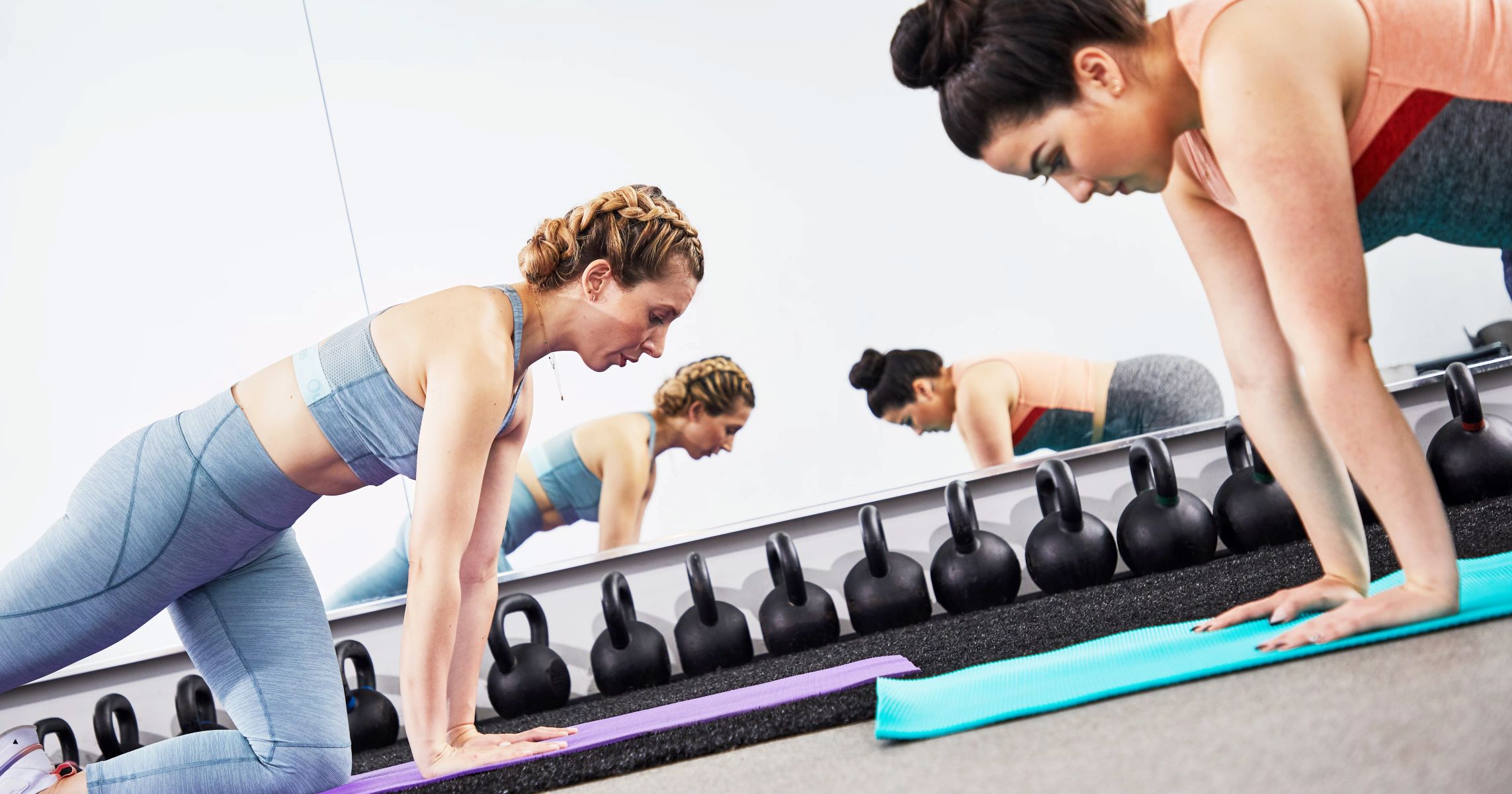

Featured
What Does Low Impact Workout Mean
Modified: January 2, 2024
Learn what a low impact workout means and how it can be featured in your fitness routine, providing gentle yet effective exercises that are easy on your joints.
Introduction
When it comes to fitness, not every workout has to be high-intensity or high-impact. In fact, incorporating low impact exercises into your routine can be incredibly beneficial for your overall health and well-being. But what exactly does “low impact” mean?
Low impact workouts refer to exercises that place minimal stress on your joints and muscles, making them a great option for people of all ages and fitness levels. Unlike high impact activities such as running or jumping, low impact exercises are gentler on your body while still providing an effective workout.
But why choose low impact exercises over high impact ones? Well, there are numerous benefits to incorporating low impact workouts into your fitness routine. For starters, they can help to reduce the risk of injuries, particularly if you have joint issues or are recovering from an injury. Low impact exercises also tend to be more sustainable in the long run, allowing you to maintain consistent exercise habits without overexerting your body.
Furthermore, low impact workouts can still be incredibly effective in improving your cardiovascular health, strengthening your muscles, and aiding in weight loss. These exercises may have a lower intensity compared to high impact workouts, but they can still provide a challenging workout while reducing the strain on your joints.
There are various types of low impact exercises that you can incorporate into your fitness routine, depending on your preferences and fitness goals. From walking and swimming to cycling and yoga, the options are endless. In the following sections, we will explore different types of low impact workouts and provide examples to help you get started.
Before jumping into the different exercises, it’s important to note that while low impact workouts are generally safe for most people, it’s always a good idea to consult with a healthcare professional, especially if you have any underlying medical conditions or injuries. Now, let’s dive into the wonderful world of low impact workouts and discover how they can transform your fitness journey!
Definition of Low Impact Workout
A low impact workout refers to a form of exercise that minimizes stress on the joints and muscles, making it ideal for individuals who prefer a gentler approach to fitness. Unlike high impact activities that involve jumping, running, or intense movements, low impact exercises offer a safer and more accessible option for people of all ages and fitness levels.
The term “low impact” primarily focuses on reducing the amount of force exerted on the body during exercise. This means that the movements involved in a low impact workout are designed to have a lower intensity and strain on the joints, thereby reducing the risk of injuries such as sprains or fractures.
Low impact exercises are particularly beneficial for individuals who have specific health concerns or limitations, such as joint pain, arthritis, osteoporosis, or recovering from an injury. By engaging in low impact activities, these individuals can still enjoy the benefits of physical activity without exacerbating their conditions or hindering their recovery process.
It’s important to note that while low impact workouts are generally considered to be gentle on the body, they can still provide an effective cardiovascular workout and help improve overall fitness. Although the intensity may not be as high as in high impact exercises, low impact workouts can still increase heart rate, enhance endurance, and contribute to weight management.
Examples of low impact workouts include walking, swimming, cycling, yoga, Pilates, and using elliptical machines. These activities allow for smooth and controlled movements, putting less stress on the joints while engaging multiple muscle groups.
The beauty of low impact workouts is their flexibility and adaptability. They can easily be modified to suit an individual’s fitness level or specific needs. Whether you’re a beginner, recovering from an injury, or simply looking to add variety to your fitness routine, low impact exercises offer a gentle yet effective way to stay active and reap the benefits of physical activity.
Benefits of Low Impact Workouts
Low impact workouts offer a multitude of benefits for individuals seeking a gentle yet effective approach to fitness. Whether you’re a beginner, have joint issues, or want to vary your exercise routine, incorporating low impact exercises can have a positive impact on your health and well-being. Let’s explore some of the key advantages of low impact workouts:
- Reduced risk of injuries: Unlike high impact exercises that put significant stress on joints and muscles, low impact workouts minimize the risk of injuries, especially for those with joint pain or existing conditions. The controlled and less intense movements help to safeguard against sprains, strains, and other common exercise-related injuries.
- Joint-friendly: Low impact exercises are gentle on the joints, making them an excellent choice for individuals with arthritis or other joint-related issues. By reducing the strain on the joints, these workouts allow for improved joint mobility, flexibility, and a lower chance of exacerbating any existing conditions.
- Improved cardiovascular health: While low impact exercises may not be as intense as high impact activities, they still provide cardiovascular benefits. Engaging in activities such as walking, swimming, or cycling can help to strengthen the heart, improve blood circulation, and enhance overall cardiovascular fitness.
- Increased muscle strength and tone: Low impact workouts focus on engaging various muscle groups, promoting strength development and tone. Activities like yoga, Pilates, or resistance training with light weights can challenge muscles without placing excessive strain on the joints, leading to improved strength, stability, and overall body composition.
- Weight management: Low impact exercises can contribute to weight management by burning calories and promoting fat loss. While the calorie burn may be lower compared to high impact activities, consistency and duration play a crucial role. Combined with a healthy diet, low impact workouts can be effective for weight maintenance or gradual weight loss.
- Enhanced mental well-being: Exercise, including low impact workouts, can have a profound effect on mental health. Regular physical activity releases endorphins, also known as “feel-good” hormones, which can boost mood, alleviate stress, reduce anxiety, and improve overall mental well-being.
Embracing low impact workouts as part of your fitness routine can bring about a wide range of benefits for both your physical and mental health. The gentle nature of these exercises makes them accessible to everyone, allowing individuals to maintain an active lifestyle and enjoy the numerous advantages of regular physical activity.
Types of Low Impact Exercises
There are numerous types of low impact exercises that can be incorporated into your fitness routine, catering to a variety of interests and fitness levels. Whether you prefer activities that focus on cardiovascular health, strength training, flexibility, or a combination of these, there is a low impact exercise for you. Let’s explore some popular options:
- Walking: Walking is a simple yet effective low impact exercise that requires minimal equipment. It can be done indoors on a treadmill or outdoors in nature, providing an opportunity to explore your surroundings while getting in some physical activity. Walking is gentle on the joints, improves cardiovascular fitness, and can be easily modified to suit different fitness levels.
- Swimming: Swimming is a fantastic low impact exercise that engages almost all major muscle groups in the body. The buoyancy of the water reduces joint stress while providing resistance for a challenging workout. Swimming not only improves cardiovascular health but also enhances muscle strength, endurance, and flexibility.
- Cycling: Cycling is a low impact exercise that can be done on a stationary bike or outdoors. It offers cardiovascular benefits, strengthens the leg muscles, and is an excellent option for individuals with joint issues. You can adjust the resistance and speed to customize the intensity of your workout and enjoy the freedom of exploring scenic routes.
- Yoga: Yoga combines gentle movements, stretches, and breathing exercises to improve flexibility, strength, and body awareness. It is a fantastic low impact exercise for individuals of all fitness levels, focusing on developing physical and mental balance. Yoga not only promotes flexibility but also enhances relaxation, stress reduction, and overall well-being.
- Pilates: Pilates is a low impact exercise method that targets core strength, stability, and flexibility. It involves controlled movements and precise alignment, often using specialized equipment or mat-based exercises. Pilates can improve posture, enhance muscle tone, and increase body awareness.
- Elliptical training: Using an elliptical machine provides a low impact workout option that mimics the motion of walking or running without the impact on your joints. It engages the arms and legs while offering adjustable resistance levels for a customized workout. Elliptical training improves cardiovascular endurance while minimizing stress on the joints.
These are just a few examples of the wide range of low impact exercises available. The key is to find activities that you enjoy and that align with your fitness goals. By incorporating a variety of low impact exercises into your routine, you can create a balanced and effective fitness program that enhances your physical health and brings you closer to your fitness aspirations.
Examples of Low Impact Workouts
Whether you’re a beginner or looking to add some variety to your fitness routine, there are plenty of low impact workouts to choose from. Here are some examples to inspire your next workout session:
- Brisk Walking: Taking a brisk walk is a simple yet effective low impact exercise that can be done anywhere. Aim for at least 30 minutes of walking to elevate your heart rate and improve cardiovascular fitness. You can increase the intensity by incorporating hills or adding ankle weights for an extra challenge.
- Aqua Aerobics: Aqua aerobics or water aerobics is a low impact exercise performed in a pool, utilizing the resistance of water to strengthen muscles and improve cardiovascular fitness. The buoyancy of water reduces stress on joints, making it an ideal option for individuals with arthritis or joint pain.
- Stationary Cycling: Cycling on a stationary bike provides a low impact workout that is great for cardiovascular health and lower body strength. You can adjust the resistance and duration of your cycling sessions to customize the intensity. Consider joining a spin class for added motivation and a fun group atmosphere.
- Yoga or Pilates Mat Exercises: Practicing yoga or Pilates on a mat offers low impact exercises that focus on flexibility, strength, and balance. These exercises can be modified to suit your fitness level and can target specific areas of the body. There are countless yoga and Pilates routines available online or at local fitness studios.
- Elliptical Training: Using an elliptical machine offers a low impact workout that simulates walking or running without the impact on your joints. It engages both your upper and lower body, providing a full-body workout that improves cardiovascular endurance and strengthens your muscles.
- Low Impact Cardio Dance: If you enjoy dancing but want to keep it low impact, consider trying a low impact cardio dance class. These classes incorporate dance movements that are gentle on the joints and offer a fun and energetic way to get in your cardio workout.
These are just a few examples, and there are many other low impact exercises and activities to explore. The key is to find activities that you enjoy and that fit your fitness goals. Remember to start slowly, listen to your body, and gradually increase the intensity and duration of your workouts. With consistency and dedication, you’ll notice improvements in your strength, endurance, and overall fitness levels.
Tips for a Successful Low Impact Workout
Getting the most out of your low impact workout involves more than just choosing the right exercises. Here are some essential tips to ensure a successful and fulfilling low impact workout:
- Warm up properly: Before starting any exercise, it’s important to warm up your muscles and joints. Engage in light cardio activities such as brisk walking or gentle stretching to increase blood flow, loosen up your muscles, and prepare your body for the workout ahead.
- Focus on proper form: Correct form and technique are vital for effective and safe low impact workouts. Pay attention to your posture, alignment, and breathing throughout the exercises. If you’re unsure about the proper form, consider working with a qualified fitness professional or joining a class where you can receive guidance.
- Progress gradually: If you’re new to low impact exercises or returning after a break, it’s essential to progress gradually. Start with shorter durations and lower intensities, and gradually increase the time, intensity, or difficulty as your fitness level improves. This approach helps prevent injuries and allows your body to adapt to the workout over time.
- Listen to your body: Everyone’s body is different, so it’s important to listen to yours. If something doesn’t feel right or causes pain, modify the exercise or consult with a healthcare professional. Honor your body’s limits and avoid pushing yourself too hard, as this can lead to injuries or burnout.
- Include a mix of exercises: To keep your low impact workout engaging and well-rounded, incorporate a mix of exercises that target different muscle groups and aspects of fitness. Include cardiovascular activities like brisk walking or swimming, strength training exercises such as yoga or Pilates, and flexibility-focused movements like stretching or balance exercises.
- Stay hydrated: Even though low impact exercises may not be as intense as high impact ones, it’s still important to stay hydrated during your workout. Drink water before, during, and after your session to replenish fluids and prevent dehydration.
- Rest and recover: Just like any workout, rest and recovery are crucial for optimal results. Give yourself time to rest between sessions to allow your muscles to repair and rebuild. Listen to your body’s need for rest days and make sure to prioritize sleep for overall recovery.
- Seek guidance if needed: If you’re unsure about how to structure your low impact workouts or need assistance in creating a personalized fitness plan, don’t hesitate to seek guidance from a certified fitness professional. They can provide valuable insights, help you set realistic goals, and tailor a workout program that suits your needs and abilities.
By following these tips, you can make your low impact workouts more effective, enjoyable, and safe. Remember that consistency and patience are key. With time and dedication, you’ll see progress in your fitness level and reap the many benefits of incorporating low impact exercises into your routine.
How to Modify High Impact Exercises to Low Impact
If you enjoy high impact exercises but want to reduce the strain on your joints or if you have specific limitations, there are ways to modify these exercises into low impact alternatives. Here are some tips on how to modify high impact exercises to low impact:
- Replace jumping with low impact alternatives: Jumping exercises, such as jumping jacks or jump squats, can be modified by replacing them with low impact options. Instead of jumping, you can perform stepping jacks by stepping side to side while raising your arms, or replace jump squats with regular squats or squats with a low impact pulse.
- Use low impact equipment: If you enjoy high impact activities like running, but want to reduce the strain on your joints, consider using low impact equipment. Switching to an elliptical machine or stationary bike can provide a cardio workout with less impact on your joints. Water-based exercise equipment, such as aqua jogging belts or resistance bands, can also be used to reduce impact during high impact workouts.
- Opt for low impact variations: Many high impact exercises have low impact alternatives that target similar muscle groups. For example, instead of high impact burpees, you can perform modified burpees by stepping back into a plank position instead of jumping. Instead of high impact mountain climbers, you can do standing knee raises or seated knee tucks.
- Focus on controlled movements: To reduce the impact on your joints, emphasize controlled movements during high impact exercises. Slow down the pace and concentrate on proper form and technique. This will help minimize the stress on your joints while still engaging the muscles and providing a challenging workout.
- Modify the range of motion: Adjusting the range of motion in certain exercises can help make them lower impact. For example, during high impact lunges or jumping lunges, you can reduce the depth of the movement or perform reverse lunges instead. This decreases the impact on your joints while still engaging the lower body muscles.
- Incorporate stability exercises: Adding stability elements to your high impact exercises can help reduce the overall impact while increasing core strength and stability. For instance, performing exercises on a stability ball or a balance board can provide a low impact variation while challenging your balance and engaging your stabilizer muscles.
- Listen to your body: As always, it’s essential to listen to your body and modify any exercise according to your abilities and limitations. If a particular modification still causes discomfort or pain, it’s important to consult with a healthcare professional to ensure you’re performing the exercises safely.
Remember, the goal is to reduce the impact, not eliminate the exercise entirely. By modifying high impact exercises into low impact alternatives, you can still enjoy the benefits of these workouts while minimizing the strain on your joints and reducing the risk of injuries. Adapt the exercises to your comfort level and gradually increase the intensity as your fitness level progresses.
Precautions and Considerations for Low Impact Workouts
While low impact workouts are generally safe and accessible for most individuals, it’s important to keep certain precautions and considerations in mind to ensure a safe and effective exercise regimen. Here are some key things to keep in mind when engaging in low impact workouts:
- Consult with a healthcare professional: If you have any underlying health conditions or previous injuries, it’s advisable to consult with a healthcare professional before starting any new fitness routine. They can provide personalized guidance considering your specific needs and limitations, ensuring that low impact exercises align with your healthcare goals.
- Listen to your body: Pay attention to any pain or discomfort during your workouts. It’s normal to feel some muscle soreness after exercise, but sharp or persistent pain may indicate an injury. If you experience pain, stop the exercise and consult with a healthcare professional or fitness expert before continuing.
- Proper warm-up and cool-down: Always start your low impact workout with a warm-up to prepare your muscles and joints for the activity. Similarly, end your workout with a cool-down and stretching routine to aid in muscle recovery and prevent stiffness. This can help reduce the risk of injury and improve flexibility.
- Modify exercises as needed: Everyone has different fitness levels and physical abilities. Modify exercises to suit your own comfort and capability. If a certain exercise is too challenging or causes pain, look for alternative movements or seek guidance from a fitness professional to find a modification that works for you.
- Gradually increase intensity: When first starting a low impact workout routine, it’s important to gradually increase the intensity and duration of your exercises. This allows your body to adapt and reduces the risk of overexertion or injury. Set realistic goals and gradually progress as you build strength and stamina.
- Use proper footwear: Selecting appropriate footwear is crucial for low impact workouts to provide support and cushioning for your feet. Invest in comfortable, well-fitted shoes with good arch support to reduce the risk of foot and ankle injuries and enhance overall stability during your workouts.
- Stay hydrated: Even though low impact exercises may not result in excessive sweating like high intensity workouts, it’s still important to stay hydrated. Drink plenty of water before, during, and after your workouts to replenish fluid levels and maintain optimal performance.
- Be mindful of your surroundings: If you’re exercising outdoors, be aware of your surroundings and choose safe and well-lit areas for your workout. Pay attention to potential hazards, such as uneven surfaces or obstacles, to avoid accidents and injuries.
By following these precautions and considerations, you can ensure a safe and enjoyable low impact workout experience. Remember, the goal is to prioritize your safety and overall well-being while reaping the many benefits of low impact exercises.
Conclusion
Incorporating low impact workouts into your fitness routine offers a multitude of benefits. Whether you’re looking to improve cardiovascular health, strengthen your muscles, or reduce the risk of joint injuries, low impact exercises provide a safe and effective solution.
From brisk walking and swimming to yoga and cycling, there are endless options to choose from when it comes to low impact exercises. These workouts offer a gentler alternative to high impact activities while still allowing you to achieve your fitness goals.
Throughout this article, we’ve explored the definition of low impact workouts, discussed their benefits, provided examples of different exercises, and offered tips for successful low impact training. We’ve also highlighted how high impact exercises can be modified to reduce the strain on your joints and muscles.
However, keep in mind that while low impact exercises are generally safe for most individuals, it’s always important to listen to your body, consult with a healthcare professional if needed, and take necessary precautions, such as warming up and using proper form.
By incorporating low impact workouts into your fitness routine, you can improve your cardiovascular health, increase muscle strength and tone, enhance flexibility, and overall, improve your well-being. So, lace up your shoes, grab your yoga mat, or hop into the pool, and get ready to embark on a journey of fitness and wellness with low impact exercises.




